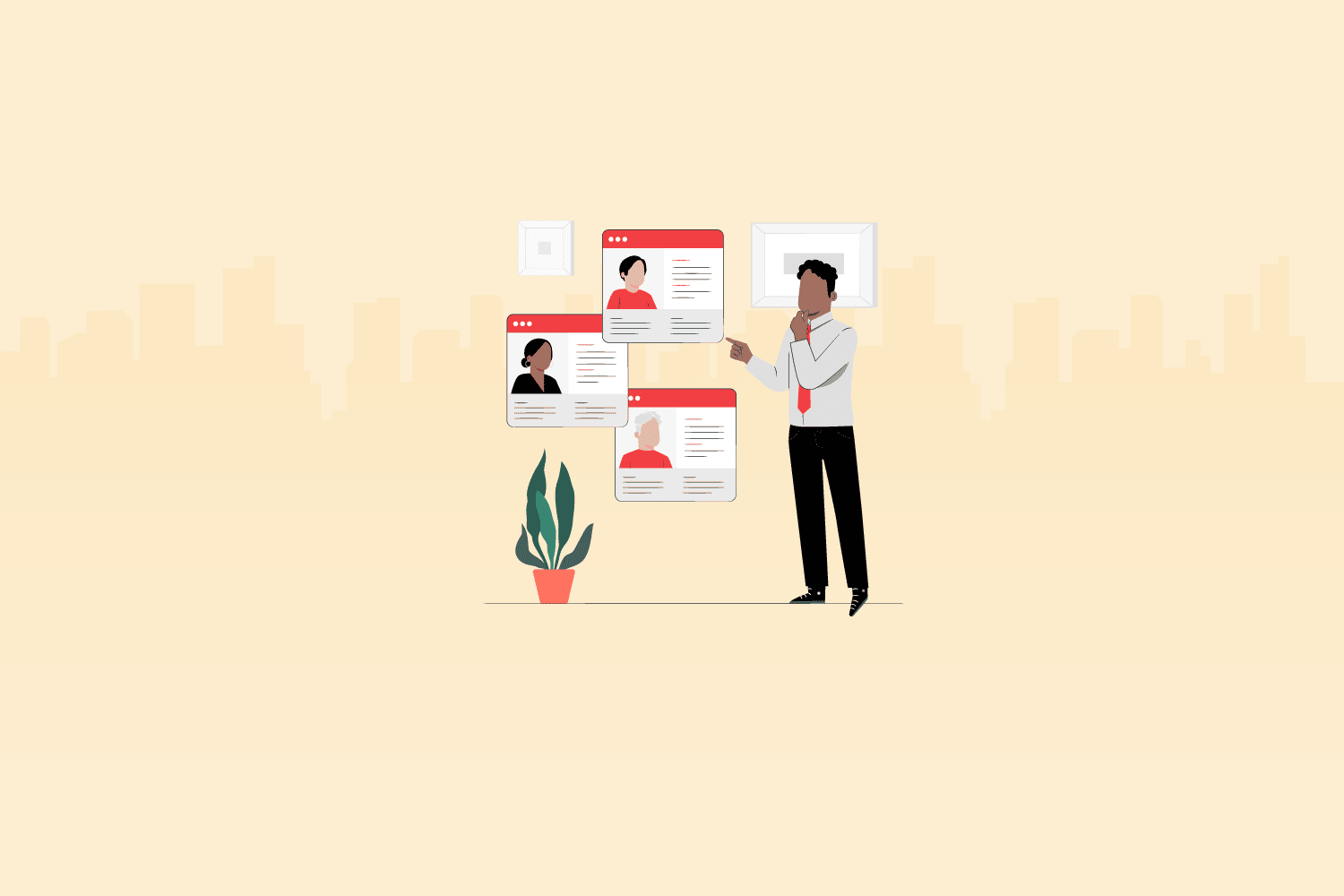In today’s dynamic business landscape, the concept of work has undergone a remarkable transformation. The rise of remote work, driven by technological advancements and changing work preferences, has revolutionized how teams operate and collaborate. With this paradigm shift comes the imperative need for effective workforce planning that is tailored to remote teams.
Remote teams that undergo effective workforce planning exhibit a 22% increase in employee satisfaction and a 19% improvement in remote team collaboration, according to a report by Buffer.
Remote work is no longer just a trend; it has become a fundamental aspect of modern work environments. As organizations continue to embrace remote work models, the art of workforce planning takes on new dimensions. Beyond the traditional aspects of recruiting and talent management, workforce planning for remote teams involves navigating unique challenges such as communication hurdles, performance measurement, and ensuring the well-being of employees in virtual settings. By delving into the nuances of remote workforce planning, companies can unlock the potential of their remote teams and create a sustainable framework for success.
In this guide, we will explore the intricacies of workforce planning in the context of remote work and highlight the key strategies and considerations necessary to create thriving and efficient virtual teams.
Key elements of workforce planning for remote teams
In the ever-expanding realm of remote work, traditional notions of workforce planning have undergone a metamorphosis. Workforce planning, once confined to physical office spaces, now encompasses a dynamic ecosystem where geographical boundaries are blurred, and teams collaborate across digital platforms. This paradigm shift necessitates a fresh perspective on workforce planning, one that recognizes the unique demands and opportunities presented by remote teams.
At its core, workforce planning for remote teams revolves around the strategic alignment of human capital with organizational goals within a virtual workspace. This involves a holistic approach that encompasses various interconnected elements.
Firstly, understanding the overarching objectives of workforce planning is paramount. Remote work amplifies the importance of clear, quantifiable objectives that can be communicated across distributed teams. This forms the foundation upon which every subsequent workforce planning decision rests.
Secondly, the modern remote work landscape demands a meticulous analysis of current workforce trends and challenges. Unlike conventional office setups, remote teams face distinctive obstacles such as asynchronous communication, potential isolation, and varying time zones. An astute understanding of these challenges equips organizations to tailor their workforce planning strategies accordingly.
Additionally, identifying the requisite skill sets and roles within remote teams is crucial. The virtual environment often calls for individuals with heightened self-discipline, digital proficiency, and adeptness at remote collaboration. Identifying and recruiting talent possessing these traits are key facets of effective remote workforce planning.
Furthermore, the allocation of resources and distribution of remote teams must be executed judiciously. Balancing workloads, optimizing team structures, and fostering cross-functional collaboration are intricacies that necessitate thoughtful consideration.
The key elements of workforce planning for remote teams underscore the significance of adaptability, clear objectives, remote-specific analysis, and strategic resource allocation. As the remote work landscape continues to evolve, embracing these elements equips organizations with the tools to thrive amidst the challenges and possibilities of the digital age.
Data-Driven approach to remote workforce planning

In the realm of remote work, where physical presence gives way to virtual collaboration, the reliance on data-driven decision-making has emerged as a guiding principle for effective workforce planning. The advent of digital tools and platforms has bestowed organizations with an unprecedented ability to gather, analyze, and interpret a wealth of data related to remote team performance, communication patterns, and productivity. Leveraging this data transforms workforce planning into a strategic endeavor rooted in empirical insights rather than conjecture.
Central to a data-driven approach is the meticulous gathering and analysis of performance metrics. Unlike traditional office settings, where direct observation might suffice, remote work necessitates quantifiable indicators that provide a comprehensive view of employee productivity. Metrics such as task completion rates, response times, project milestones, and contribution to team objectives become the compass points guiding workforce planning decisions.
Technology plays a pivotal role in this process. Organizations employ a diverse range of tools, from project management software to communication platforms, which generate an abundance of data points. However, the real value lies in the ability to distill this data into actionable insights. Data analysis tools and techniques empower decision-makers to identify trends, anticipate challenges, and capitalize on opportunities within their remote teams.
Furthermore, a data-driven approach encompasses the capacity to adapt workforce planning strategies based on insights garnered from data. For instance, if data highlights that a particular team member thrives in asynchronous communication while struggling in real-time meetings, adjustments can be made to align with their strengths and enhance overall team efficiency.
The data-driven approach to remote workforce planning transforms the art of managing remote teams into a scientific endeavor. By embracing empirical evidence, organizations not only refine their strategies but also foster an environment where remote teams can maximize their potential, thrive in their roles, and contribute significantly to the organization’s success.
Adapting recruitment and onboarding for remote teams
The seismic shift towards remote work has not only redefined where work takes place but has also revolutionized how organizations approach recruitment and onboarding processes. In this new era of decentralized teams, the traditional methods of hiring and integrating new employees have given way to innovative approaches that account for the unique dynamics of remote work.
Recruiting for remote teams requires a paradigm shift in itself. Instead of focusing solely on geographical proximity, organizations now prioritize a candidate’s digital aptitude, self-discipline, and ability to thrive in virtual environments. Assessing these qualities, along with technical skills, becomes crucial during the recruitment process. Additionally, remote roles often demand a heightened level of proactive communication and independent problem-solving, making these attributes sought-after characteristics in potential hires.
The transition from recruitment to onboarding marks another significant pivot. In traditional office setups, onboarding often involves physical tours, face-to-face introductions, and immediate immersion into the workplace culture. Remote onboarding, on the other hand, requires a strategic blend of technology, documentation, and virtual interactions. Comprehensive digital resources, video orientations, and dedicated mentorship become essential tools in familiarizing new employees with company values, team dynamics, and role expectations.
Remote onboarding extends beyond the initial days, evolving into an ongoing process. Regular check-ins, virtual team-building activities, and continuous feedback mechanisms play a crucial role in cultivating a sense of belonging among remote employees. Building a strong remote team culture is not just an ancillary objective; it’s an integral part of retaining and nurturing talent in the remote work landscape.
In summary, adapting recruitment and onboarding practices for remote teams involves a shift towards assessing digital readiness, leveraging technology for comprehensive introductions, and fostering a virtual team culture that encourages collaboration and growth. As organizations continue to embrace remote work, these adapted approaches to recruitment and onboarding will play a pivotal role in building resilient, high-performing remote teams.
Developing flexible workforce models for remote teams
The evolution of remote work has ushered in a new era of flexibility in workforce models. No longer confined to the rigid structures of traditional office setups, organizations are embracing agile strategies that accommodate the ever-changing demands of remote teams. Developing flexible workforce models is not merely a response to the remote work trend; it is a strategic imperative that empowers organizations to optimize efficiency, adapt to varying workloads, and capitalize on diverse talent pools.
Agile workforce structures lie at the heart of remote team success. Instead of fixed job roles, organizations are shifting towards dynamic roles that allow employees to contribute across various functions based on their strengths and expertise. This not only enhances team versatility but also ensures that the right skills are deployed for specific projects, resulting in increased overall efficiency.
The concept of flexibility extends to the inclusion of freelancers, contractors, and temporary staff in the remote workforce. By tapping into these external resources, organizations can swiftly scale their teams to meet project demands while maintaining cost-effectiveness. This approach also offers the benefit of diverse perspectives and specialized skills that might not be readily available within the organization.
Balancing full-time and part-time remote employees is another facet of developing flexible workforce models. The remote landscape allows organizations to tap into a global talent pool, enabling the creation of teams that operate across different time zones. This not only ensures 24/7 productivity but also promotes inclusivity by accommodating employees from various cultural backgrounds.
The remote work landscape is characterized by its fluidity, and as such, workforce models must adapt accordingly. Organizations that embrace flexibility in workforce planning position themselves to thrive in a rapidly changing environment, leveraging the inherent advantages of remote work while ensuring optimal resource allocation and team agility.
Communication and collaboration in remote workforce planning

Effective communication and collaboration lie at the heart of successful remote workforce planning. In a virtual environment where face-to-face interactions are replaced by digital interfaces, the ability to connect, convey ideas, and work collectively becomes a critical determinant of team performance and organizational success.
Seamless communication is paramount in remote teams. The absence of physical presence demands a shift towards deliberate, structured communication methods. Selecting appropriate communication tools and platforms is pivotal. Whether it’s video conferencing, instant messaging, or collaborative project management platforms, the right tools create a conduit for real-time interactions and facilitate the exchange of information among remote team members.
However, effective communication transcends mere tool selection. Organizations must establish clear communication guidelines that outline expectations for response times, modes of communication, and etiquette. These guidelines ensure that virtual discussions remain focused, productive, and inclusive, fostering a sense of coherence within remote teams.
Collaboration in remote settings requires intentional efforts. Virtual collaboration is not confined to scheduled meetings; it encompasses a culture of shared knowledge, regular updates, and mutual support. This necessitates a shift towards asynchronous collaboration, allowing team members to contribute regardless of their time zones or schedules.
Facilitating cross-functional collaboration is also a crucial aspect of remote workforce planning. Remote teams often comprise individuals with diverse skill sets, and harnessing this diversity requires intentional efforts to break down silos and encourage interdisciplinary cooperation. This can be achieved through cross-team projects, interdepartmental workshops, and platforms that facilitate idea-sharing and problem-solving across functions.
Communication and collaboration in remote workforce planning demand a strategic blend of technology, guidelines, and cultural fostering. Organizations that prioritize these aspects create an environment where remote teams are not only connected but also empowered to innovate and drive collective success.
Performance management and remote workforce planning
Navigating the realm of performance management in remote workforce planning presents a unique set of challenges and opportunities. With physical proximity replaced by virtual interactions, evaluating employee performance becomes a nuanced endeavor that requires clear objectives, data-driven insights, and a keen focus on employee growth.
Setting clear performance metrics and goals is the foundation of effective remote performance management. In the absence of daily in-person interactions, remote employees must have a clear understanding of their roles, responsibilities, and the outcomes expected of them. This calls for well-defined key performance indicators (KPIs) that align with both individual and organizational objectives.
Implementing remote performance evaluation strategies requires a departure from traditional methods. Rather than relying solely on subjective evaluations, remote performance assessment should be based on quantifiable data. Performance analytics can encompass task completion rates, project milestones achieved, client satisfaction scores, and even self-assessment metrics. These insights provide a comprehensive view of employee contributions and productivity.
Providing constructive feedback and recognition in remote settings is a balancing act. Regular feedback sessions, whether one-on-one or in group settings, are crucial for remote employees to understand their strengths and areas for improvement. Equally important is recognizing and celebrating accomplishments, fostering a sense of appreciation and motivation within remote teams.
Continuously improving remote work processes is an integral aspect of performance management. Regularly reviewing remote work procedures, communication protocols, and collaboration methods allows organizations to refine their approaches based on data insights and employee feedback. This iterative process contributes to the evolution of efficient remote workflows.
Performance management within remote workforce planning necessitates a meticulous blend of data-driven evaluation, consistent feedback, recognition, and process refinement. Organizations that embrace these strategies create an environment where remote employees are empowered to excel, contribute meaningfully, and chart a path towards personal and professional growth.
Ensuring remote workforce well-being and engagement
Amid the virtual expanse of remote work, the well-being and engagement of remote employees emerge as central pillars of a thriving organizational culture. The absence of physical proximity and face-to-face interactions underscores the need for intentional efforts to ensure that remote team members remain connected, motivated, and mentally resilient.
Addressing remote employee isolation and burnout is a paramount concern. The remote work environment, while offering flexibility, can also lead to feelings of isolation and a blurring of boundaries between work and personal life. Organizations must prioritize regular check-ins, virtual team-building activities, and open channels for informal communication to counteract the sense of isolation that some remote employees might experience.
Maintaining work-life balance in remote settings requires both individual and organizational commitment. Remote employees may find it challenging to disconnect from work when the boundaries between their professional and personal spaces are blurred. Organizations can foster work-life balance by encouraging employees to set clear boundaries, take breaks, and create dedicated workspaces within their homes.
Creating virtual team-building activities and events contributes to remote employee engagement. These activities provide an avenue for remote team members to interact beyond work-related matters, strengthening connections and fostering a sense of camaraderie. Virtual team-building can range from online games and quizzes to shared virtual lunches, enabling remote employees to bond over shared experiences.
Nurturing remote employee growth and development is another facet of ensuring well-being and engagement. Providing opportunities for upskilling, continuous learning, and career advancement demonstrates an organization’s investment in its remote workforce. Regular performance discussions that focus on personal development goals contribute to remote employees feeling valued and motivated.
Ensuring remote workforce well-being and engagement demands a holistic approach that addresses isolation, burnout, work-life balance, and growth opportunities. Organizations that prioritize these aspects not only create a positive remote work environment but also cultivate a sense of belonging and purpose among remote employees, ultimately driving productivity and contributing to the organization’s success.
Future-proofing workforce planning for remote success
The landscape of work is continually evolving, and the strategies employed in remote workforce planning must evolve in tandem. To secure sustainable success in the realm of remote work, organizations need to adopt forward-thinking approaches that encompass adaptability, technological innovation, and a commitment to continuous improvement.
Adapting to evolving remote work trends is a cornerstone of future-proofing workforce planning. The dynamics of remote work are in a state of constant flux, driven by advancements in technology, changes in workforce demographics, and shifts in employee expectations. Organizations that stay attuned to these trends can proactively adjust their workforce planning strategies, ensuring they remain aligned with the evolving needs of remote teams.
Incorporating new technologies and tools is an essential aspect of future-proofing remote workforce planning. The tools that streamline communication, collaboration, and performance measurement are ever-evolving, offering organizations enhanced capabilities for managing remote teams. Staying informed about these technologies and integrating them into workforce planning can significantly enhance efficiency and productivity in remote settings.
Cultivating learning and upskilling opportunities is pivotal for maintaining a competitive edge in remote work environments. Remote employees should have access to resources that enable them to acquire new skills and stay relevant in their roles. Organizations that prioritize learning foster a culture of continuous improvement and demonstrate a commitment to their remote workforce’s professional growth.
Continuously iterating remote workforce planning strategies is the hallmark of future-proofing. What works today may not be as effective tomorrow, given the rapid pace of change in the remote work landscape. Organizations must regularly assess their remote workforce planning strategies, gather feedback from remote employees, and make necessary adjustments to optimize their approach.
Future-proofing workforce planning for remote success requires an agile mindset, a willingness to embrace new technologies, and a dedication to fostering growth and improvement. Organizations that anticipate change, stay technologically adept, and prioritize their remote employees’ development are poised to not only navigate the challenges of the future but to thrive in a landscape characterized by remote work’s limitless possibilities.
Conclusion
As we conclude this comprehensive guide to workforce planning for remote teams, it’s evident that the landscape of work is in a constant state of evolution. Remote work has ceased to be an experiment and has firmly established itself as a central facet of modern business operations. In this context, workforce planning has become an indispensable tool for organizations aiming to thrive in the remote work era.
Effective workforce planning for remote teams is a multifaceted endeavor that requires a deep understanding of remote work dynamics, a data-driven approach, and a commitment to nurturing the well-being and engagement of remote employees. By embracing flexibility, communication, and adaptation, companies can successfully navigate the challenges posed by remote work and seize the opportunities it presents.
Remember, the journey of remote workforce planning is not a one-time task; it’s an ongoing process of refinement and adaptation. As technology continues to evolve and the workforce landscape changes, organizations must remain agile and willing to iterate their strategies. By prioritizing remote workforce planning, companies can create an environment where remote teams not only survive but thrive, contributing their best to the organization while enjoying the benefits of flexible and fulfilling work experiences.
Testlify offers a range of assessments and challenges that allow you to gauge candidates’ knowledge, problem-solving skills, and creativity in real-world scenarios. With our extensive test library, you can objectively evaluate candidates’ abilities, ensuring you shortlist the most talented individuals efficiently. Ready to unlock the potential of your hiring process with our talent assessment tool? Book a free 30-minute live demo with Testlify. Our expert team will guide you through the platform, showcasing relevant skill tests tailored to your organization’s needs. With our support, you can streamline candidate selection, saving valuable time and resources.








